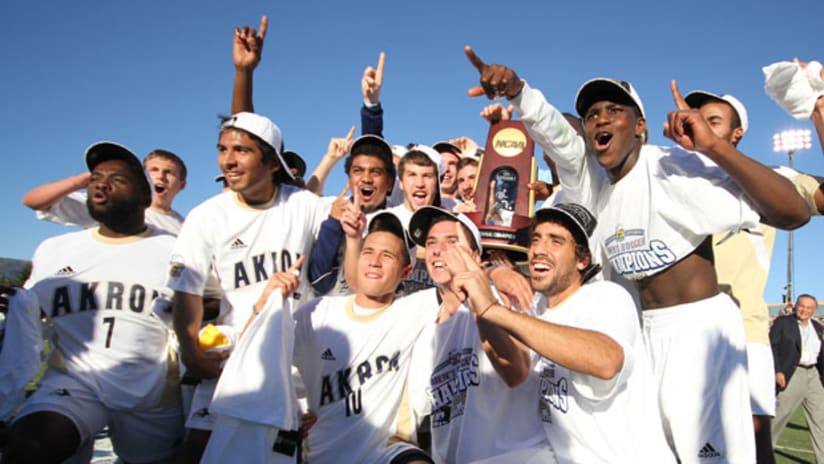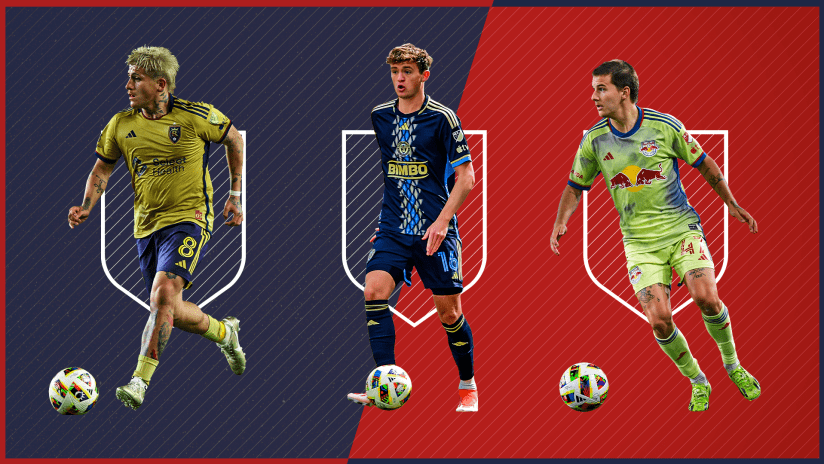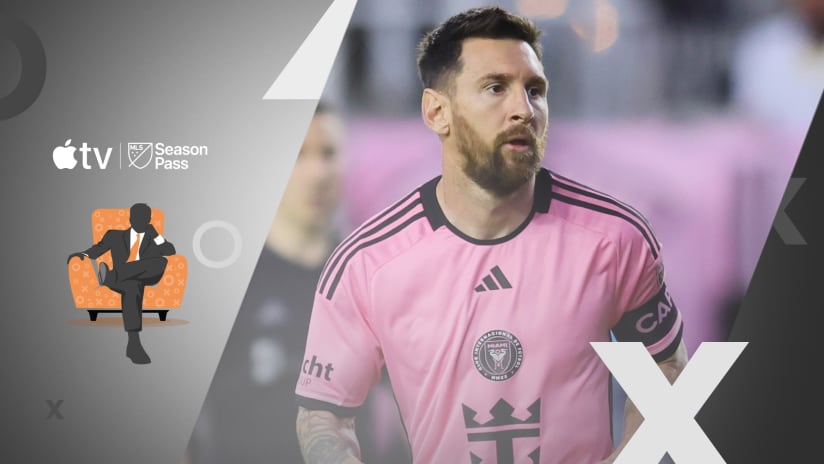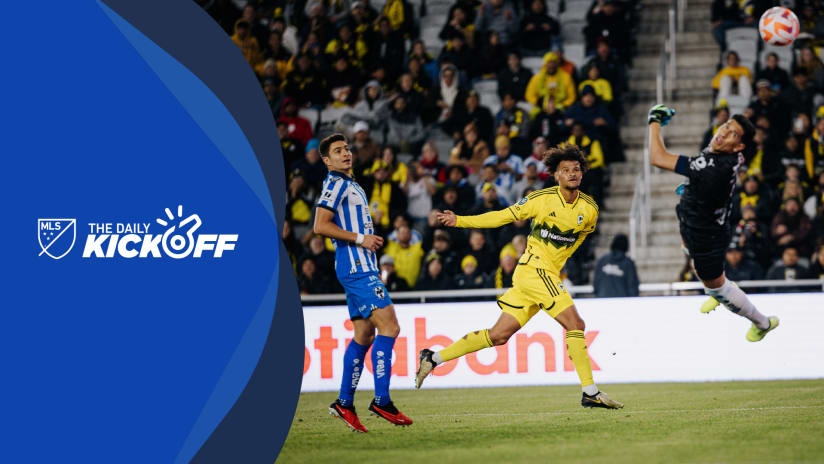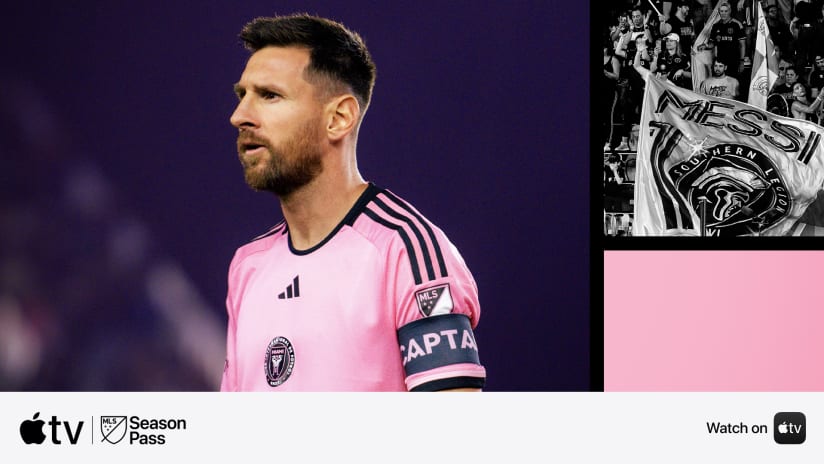Let’s preface this whole discussion with something that’s axiomatic: The rise of MLS developmental academies and, with it, professional training for young American and Canadian talent, is an unvarnished good. It is the best news since the commitment to soccer-specific stadiums. It is the surest sign that the league is taking “the next step."
But that doesn’t mean college soccer is dead. Far from it. A rising tide lifts all boats, as the saying goes, and that’s as true in American soccer as it is in any other venue.
Over the past 15 years, the advance in quality of MLS has been mirrored by that of amateur soccer on these shores. And for that reason, the annual SuperDraft is more relevant than ever.
There is no scientific way to measure the change, but it’s pretty clear that the top-quality players coming out of college these past few years have been more MLS-ready than their predecessors. That’s not to say the NCAA doesn’t have some feathers in its cap from years past, but the difference between the very top of the NCAA heap and, say, the 50th pick in the draft, has narrowed considerably. Just ask guys like Geoff Cameron, Ben Zemanski and Shaun Francis.
The counter-argument is, “Yeah, but every player you just named would have developed faster and better in a professional academy/reserve team structure rather than the NCAA route.”
The response: No matter the sport, there will always be late-bloomers.
[inlinenode:317983]Take Tim Ream of the New York Red Bulls, for example. He was on few people's radar for most of his soccer-playing life, yet he ended up anchoring the eighth-best defense in league history – as a rookie. Then he made his US national team debut less than a year after leaving the University of St. Louis.
It’s hard to say that four years of college soccer did Ream a disservice.
Sure, the level of play in college isn’t what it could be if the NCAA loosened the reigns a bit and extended the season, but every year, a handful of top college teams like UConn, Maryland and UCLA tour Europe, regularly dishing out thrashings to third division clubs and reserve sides. That speaks to a level of skill that is just about appropriate for our best college-aged kids.
The other benefit of NCAA soccer is that, from August through November, college players are put through an absolute meat-grinder where, for the most part, a three-game losing streak means the end of your conference title hopes. Or worse, the end of your NCAA Tournament hopes.
That’s pressure. That’s 18-to-22 year-olds in an environment where they need to learn how to win, how to keep their energy and focus week-in and week-out for 12 straight weeks.
It’s not ideal, because a number of those games will happen against inferior competition who will simply bunker and play for a 1-0 result. But, well, doesn’t that sound a lot like the US route through CONCACAF World Cup qualifying? Anyone who remembers the games in Cuba and Trinidadad & Tobago from the last cycle is nodding right now.
And while the NCAA sometimes gets it right, there’s also the fact that professional development set-ups sometimes get it wrong.
[inlinenode:324122]Take the story of Gale Agbossomounde. Largely regarded as the most promising member of the 2009 US U-20 World Cup squad, he signed a professional contract after the tournament with an eye toward earning a spot on one of the big clubs in Europe.
In the year-and-a-half since then, he’s played just six professional games, all for the USSF D-2 squad Miami FC. Agbossomounde’s fitness and form had atrophied so much that, on a recent trip to South America with the U-20s, he was benched.
Now, college never entered into the equation for Agbossomounde. It was either MLS or Europe, and he chose the latter.
But given the misery of his career since he went pro, and given the rise of guys who play the same spot as he – guys like Ream and LA Galaxy pair Omar Gonzalez and AJ DeLaGarza – can anyone really argue that college soccer wouldn’t have been a better path than the one Agbossomounde chose?
Entering into the realm of North American exceptionalism, there is also the problem of geography. The US and Canada are two of the largest countries in the world, and even with 20 development academies up and running, there’d be no way to cover everyone. This is not an issue they deal with in Holland, which is roughly the same size as the state of Maryland.
Ideally, then, the NCAA can fill the gaps. As MLS clubs get the top talent, college coaches will have to get better at kicking over every stone and even developing talent themselves. That, also, is an unvarnished good.
Bear all that in mind next Thursday during the SuperDraft. Things are changing for the better in MLS, and what you see coming out of Baltimore will be a part of it.
Matthew Doyle can be reached for comment at matdoyle76@gmail.com and followed at twitter.com/mls_analyst.


